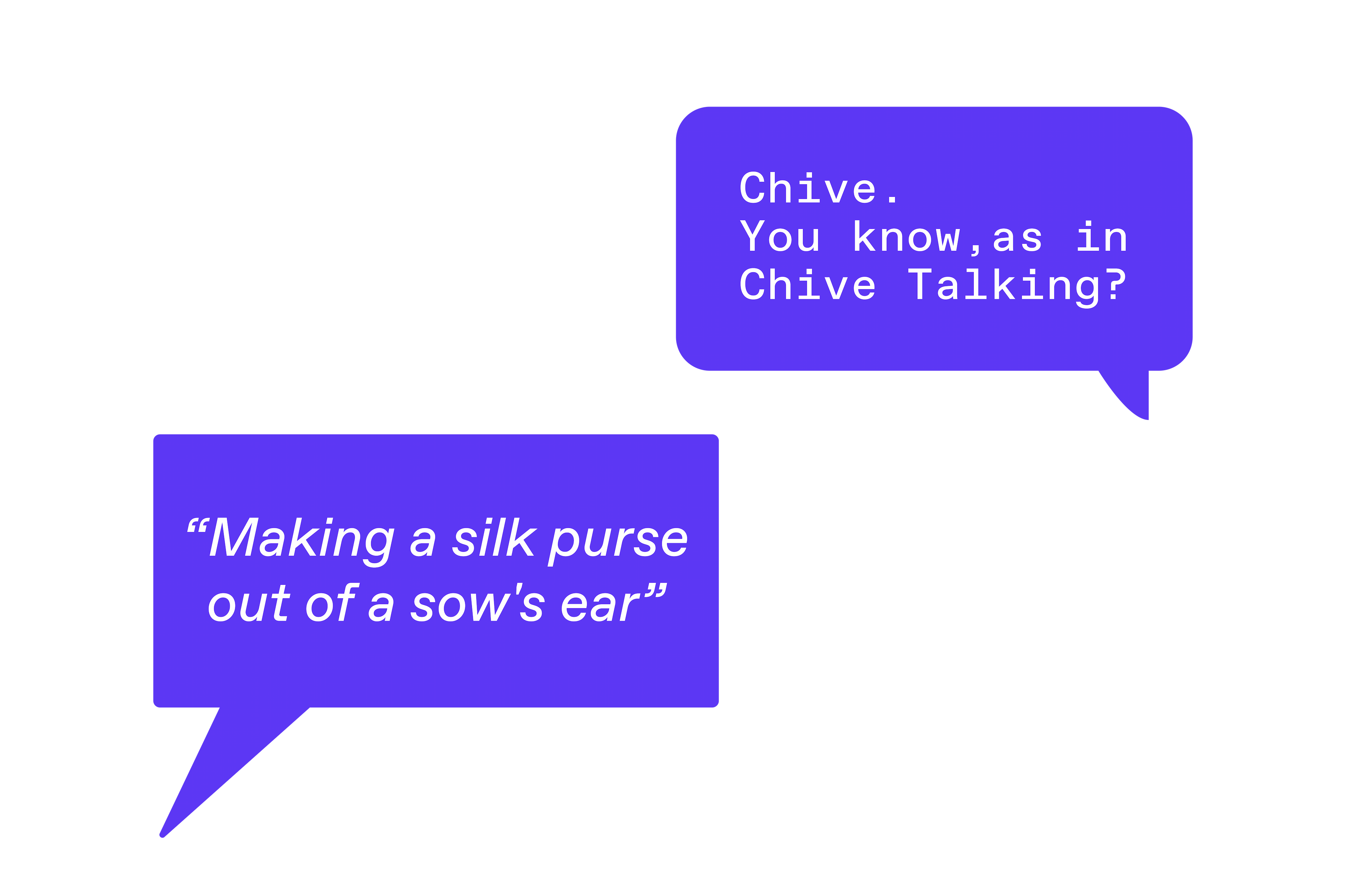
CATEGORY
Chukster Stories
WRITER
Rebecca Meyer
ARTICLE
The Meringue Affair
DATE
14.07.23
THE MERINGUE AFFAIR
R🇨🇭: “Did you end up making a cake for your birthday, Petra?”
P🇩🇰: “Yes, I made a Pavlova. With merengue [meˈʁaŋgə]”
M🇫🇷: “Oooh meringue! [mə.ʁɛ̃ɡ] Made from eggs! I know, we have it in France! But how do you say it in English?”
R🇨🇭: “It's just meringue [məˈrӕŋ]”
Whether it's realising that all of our different languages actually have quite a lot in common, or trying to teach each other words, expressions, or dad jokes in a different language - a lot of the conversations in the studio turn around language, pronunciation, sayings, and communication.
M🇫🇷: “We also bought this thing, but we don't what it's called. What is it called in Danish again, Petra?”
P🇩🇰: “Purløg”
M🇫🇷: “Oh yes, PURRLÖGG! How is it in English?”
S🇬🇧: “Chive. You know, as in ”It's just your Chive Talkin" (Bee Gees reference)".
At this point, we are all lost, and it's probably not down to just the language.
In their "Making it in the Creative Industry - A Practical Guide", the Creative Mentor Network include the slightly sarcastic paragraph “‘Fitting in’ to an office is the single most important thing. In fact, most workplaces hire on a basis of ‘culture fit’, rather than ‘culture add’. It’s not about what new thinking and perspectives you can bring to work. That would be scary and challenging. Instead, be like the amoeba - you want to aim for homogenous goo.
The nail that sticks out gets hammered down. But you can’t hammer goo. It just sticks to the hammer. This means: speak like everyone else. Look like everyone else. Think like everyone else. You can do it. You can goo it.”

At Chukster Studio, we still have a way to go, but as we grow, we aim to add people to the team that bring their own background, culture, language, and vision to our studio. Designers with their own opinion and an understanding of design that will question the status quo - and us.
While it may pose regular challenges in trying to explain ideas, visual concepts, or design approaches to each other, we believe that it makes us more aware of the words we use, more precise in our communication, and - maybe most importantly - less precious. The important thing is that the person for whom the message is intended gets the point. No matter whether the words used to achieve that understanding were fancy or a mish-mash of all the languages we could think of at that moment.
One of our favourite pastimes in the studio is Steven explaining old English sayings to the team - breaking them down into words and analysing the meaning. "Making a silk purse out of a sow's ear" is a particularly fitting one for designers, and is now much used by all of us - in varying accents and interpretations.
We try to take that learning into the work we do as well. When explaining to a client why we have made a certain design choice, the most important thing is for the client to understand our reasoning - not for us to tick off a list of industry keywords. And when we write campaign copy, the only person that really matters is the audience of the campaign - the copy needs to make sense to them. The best advertisement slogans are meaningless if the audience does not understand what they are trying to say.
#graphicdesign #communication #officeculture #languages #creativeagency #designagency #designcommunication #copenhagen






